
Team
With ten unique technical teams and five administrative teams we truly have something for anyone that wants to get involved and help us build world class electric racecars. In one year we start from the ground up to design, build, and compete in competitions across the US and as far as the Hockenheimring in Germany. This means we need all hands on deck! Click the buttons below to learn more about our team’s structure and breakdown.
Aerodynamics
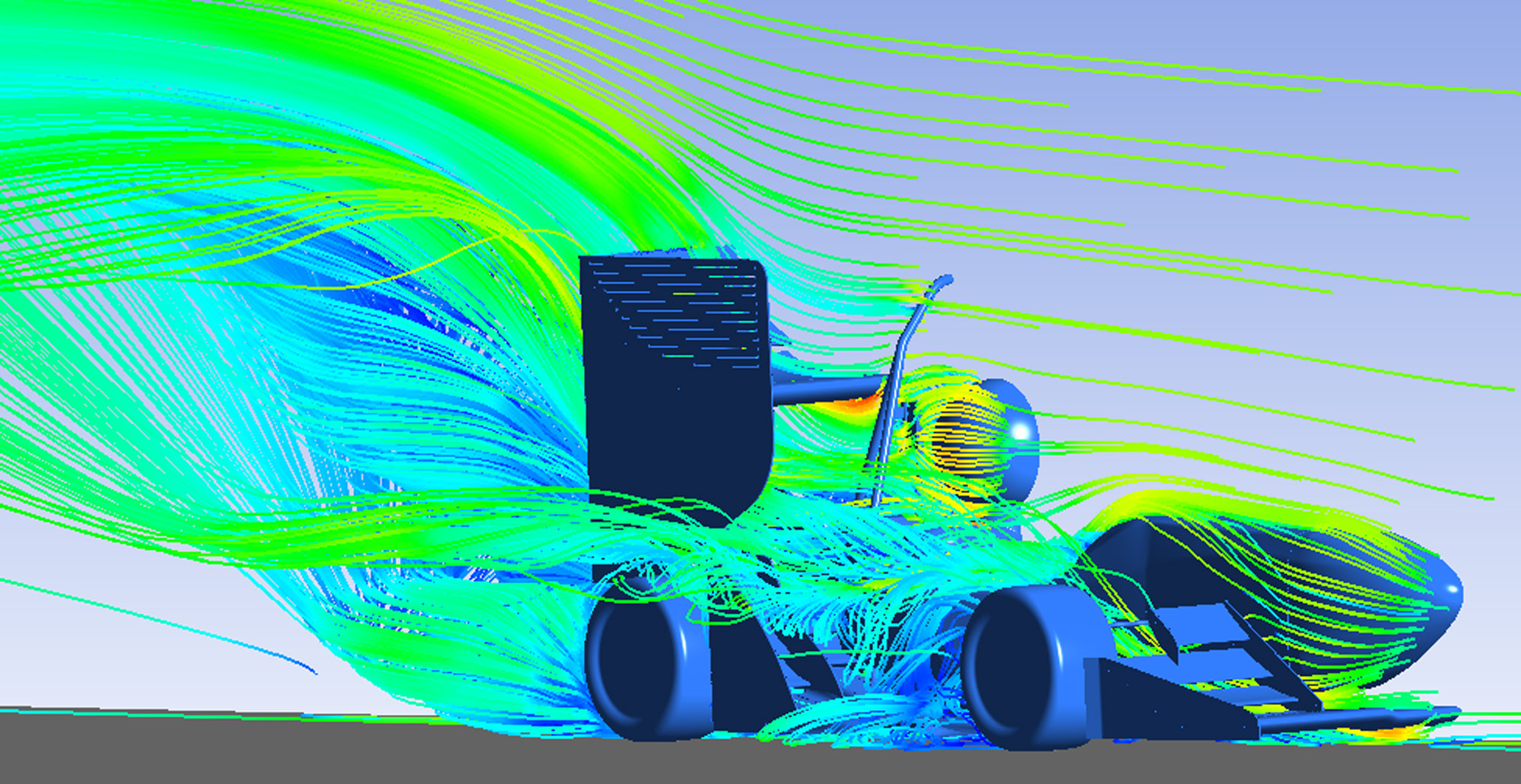
Aerodynamics designs, manufacturers, and tests the aerodynamic package of the car. The package includes a front wing, an undertray (floor), side wings, sidepods, and a rear wing. Using Solidworks and Ansys Computational Fluid Dynamics (CFD), the team designs, tests, and iterates upon their models in the Fall. In the Winter the team works with the Composites team to manufacture the package entirely out of carbon fiber. Once the rest of the car is ready to roll, the Aero team uses tassels and flow-vis to compare simulation results to reality. On test days, the Aero team works with Suspension and Drivers to confirm Aero balance. The downforce generated by the aerodynamics package is crucial to high-speed cornering and overall performance.
Chassis
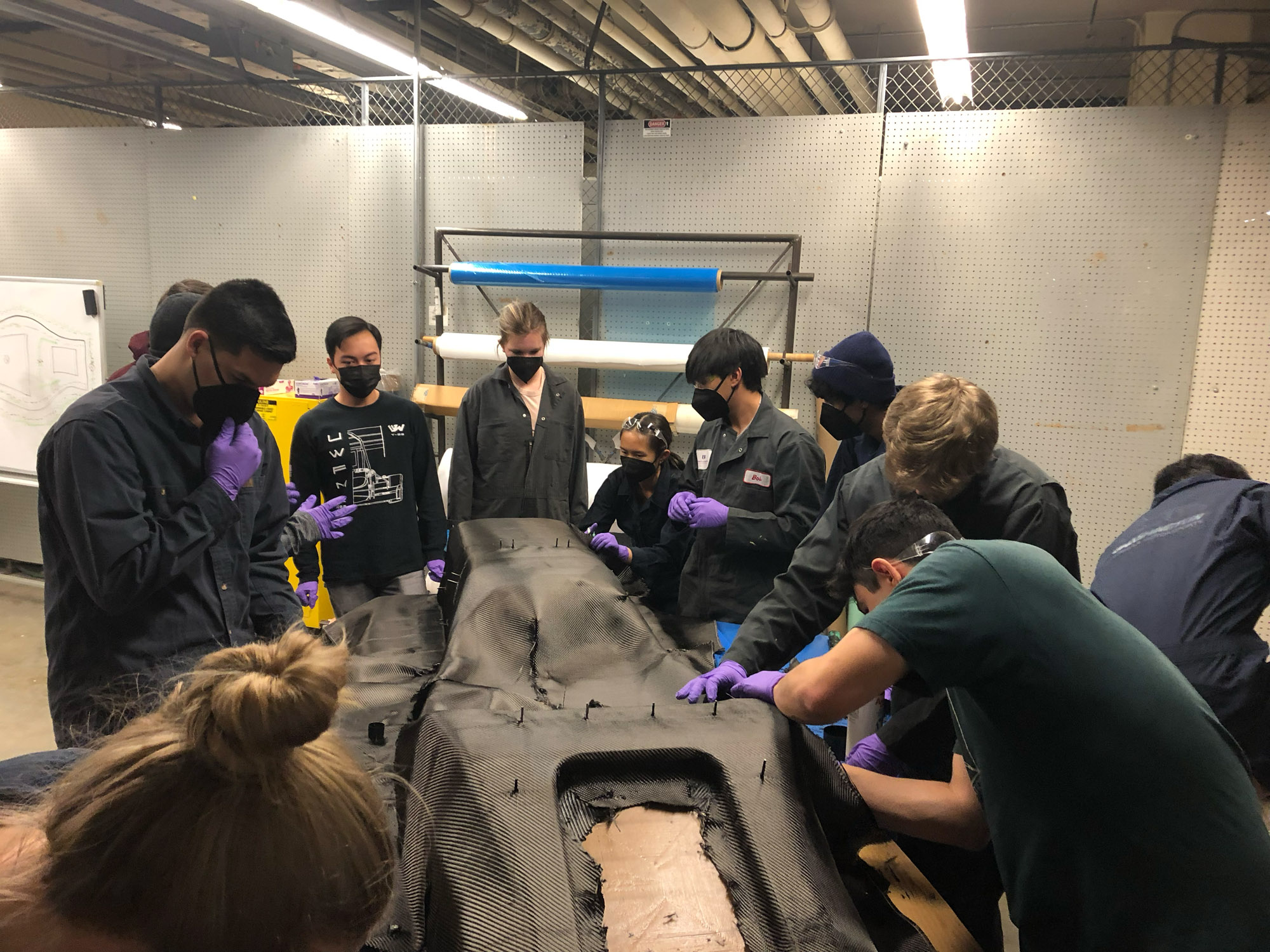
Chassis designs and manufactures the carbon fiber composite monocoque, the foundation of our vehicle. As the main structural component, Chassis team works with all technical teams in order to integrate each system . Additionally, members on Chassis design safety devices such as crash structures such as the roll hoops, and driver interfaces such as the seat. Over the course of the Summer, Chassis goes through extensive design iterations, combining structural analysis, driver ergonomics, vehicle packaging, and functionality, to allow for manufacture through the following year. Care must be taken to comply with competition rules, whilst achieving stiffness specifications, target weight, and manufacturability.
Composites

The Composites team is primarily composed of new members to expose them to various methods for constructing and analyzing carbon fiber parts. In order to ensure that each component can withstand the forces that are outlined by other subteams and the SAE rules, extensive testing is required. This team works closely with the Aerodynamics and Chassis subteams to consult on technical projects for ply layup design and for manufacturing best practices. Composites focuses on researching innovative composite applications and proving structural equivalency in the Fall and shifts to fabrication of critical components for the rest of the school year. This is important because the research and testing of parts produced by this team is essential for the validation of the structural components during competition.
Drivetrain
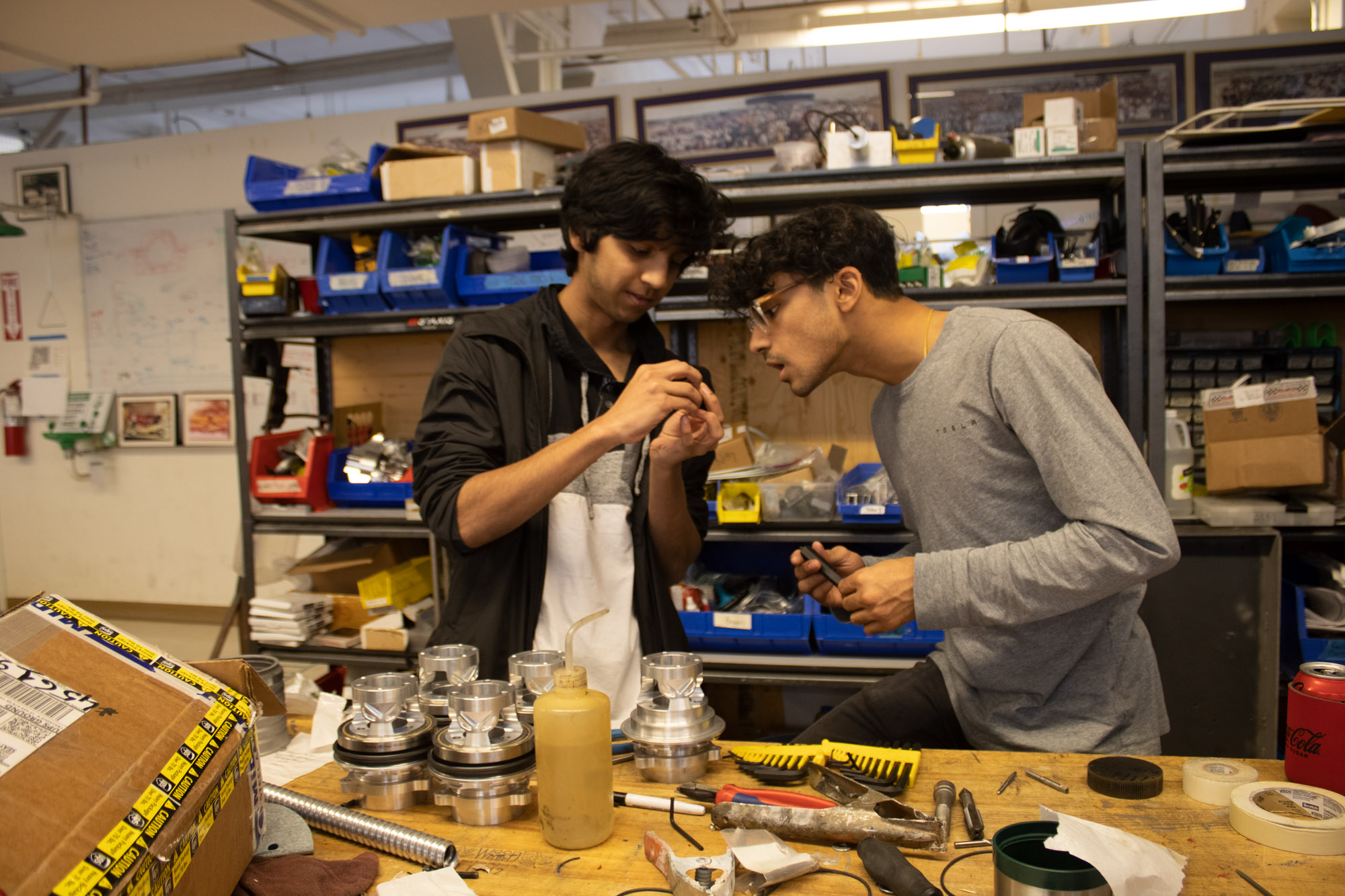
The Drivetrain team is responsible for the design, manufacturing and testing of every component between the electric motor and the wheel. The system contains an ultra high precision compound planetary gearset, laser sintered motor cooling jacket, and a topology optimized titanium suspension upright that doubles as gear housing. As our car follows an in-hub design, a drivetrain assembly is located at each corner of the car. Through the Fall, each member is given a project to refine and improve upon. Drivetrain parts are typically manufactured by sponsors so members will spend the Winter communicating with sponsors to stay on schedule, with the various manufacturing methods ranging from CNC machining to EDM to powder bed printing. At drives, members collect temperature data and monitor wear on various components. Producing a 4WD package that is efficient, reliable, and can operate at peak performance is the main goal of Drivetrain.
Electric powertrain
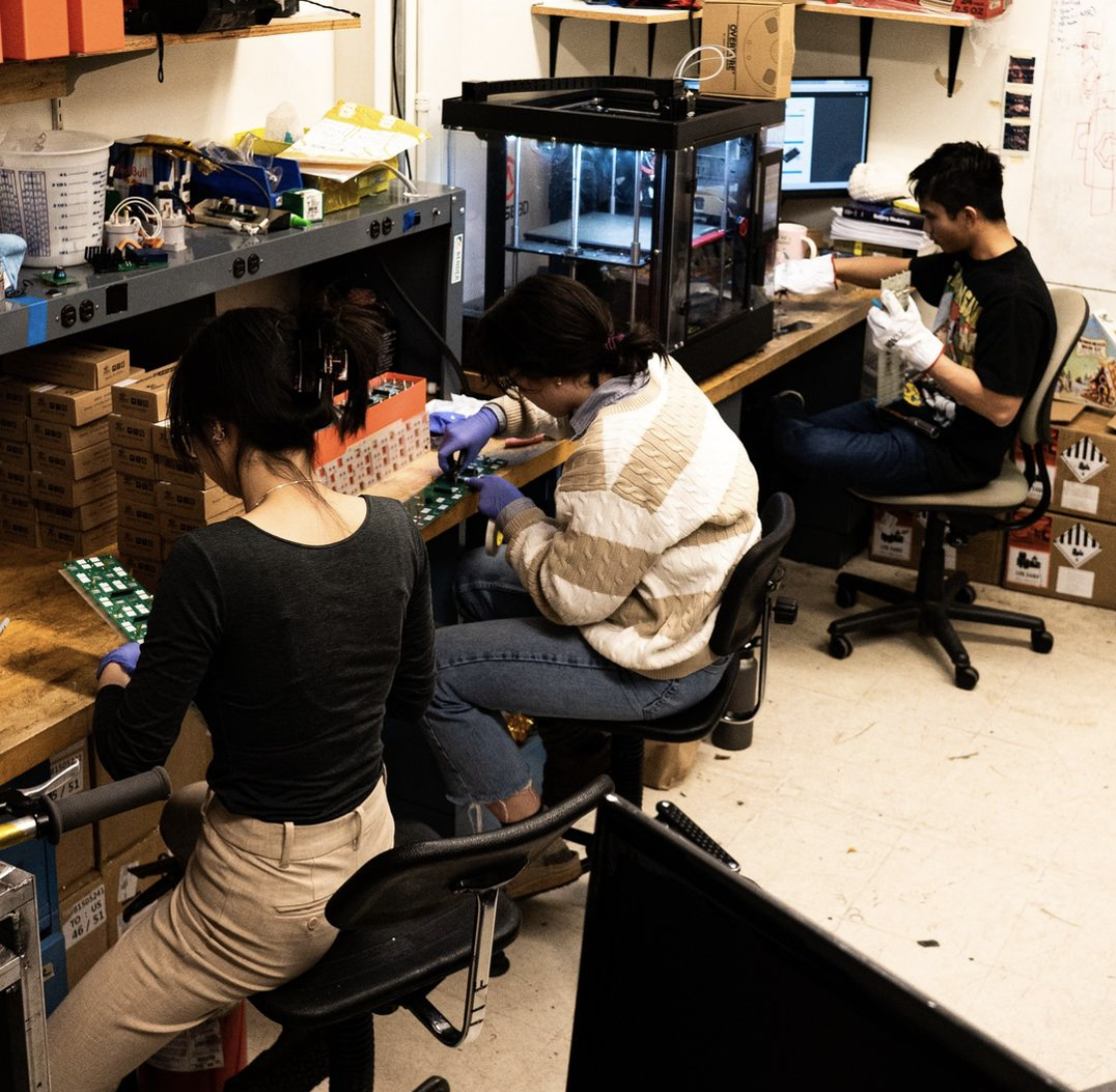
The Electric Powertrain (eTrain) team is responsible for the design, manufacturing, and integration of the high voltage and low voltage battery packs, the inverter packaging, the high voltage junction box, and the high voltage battery pack enclosure. At the beginning of the year, eTrain incorporates data from drives as well as specified performance and rules requirements into the designs of these different projects. In the Winter, eTrain manufactures these components through various methods such as carbon fiber layup, 3D printing, milling, etc. Following the completion of the chassis, electrical integration begins with the incorporation of the battery pack, electronics, and sensors implemented into the car. For the rest of the year, eTrain will work to ensure electrical reliability and durability through testing and debugging.
Manufacturing
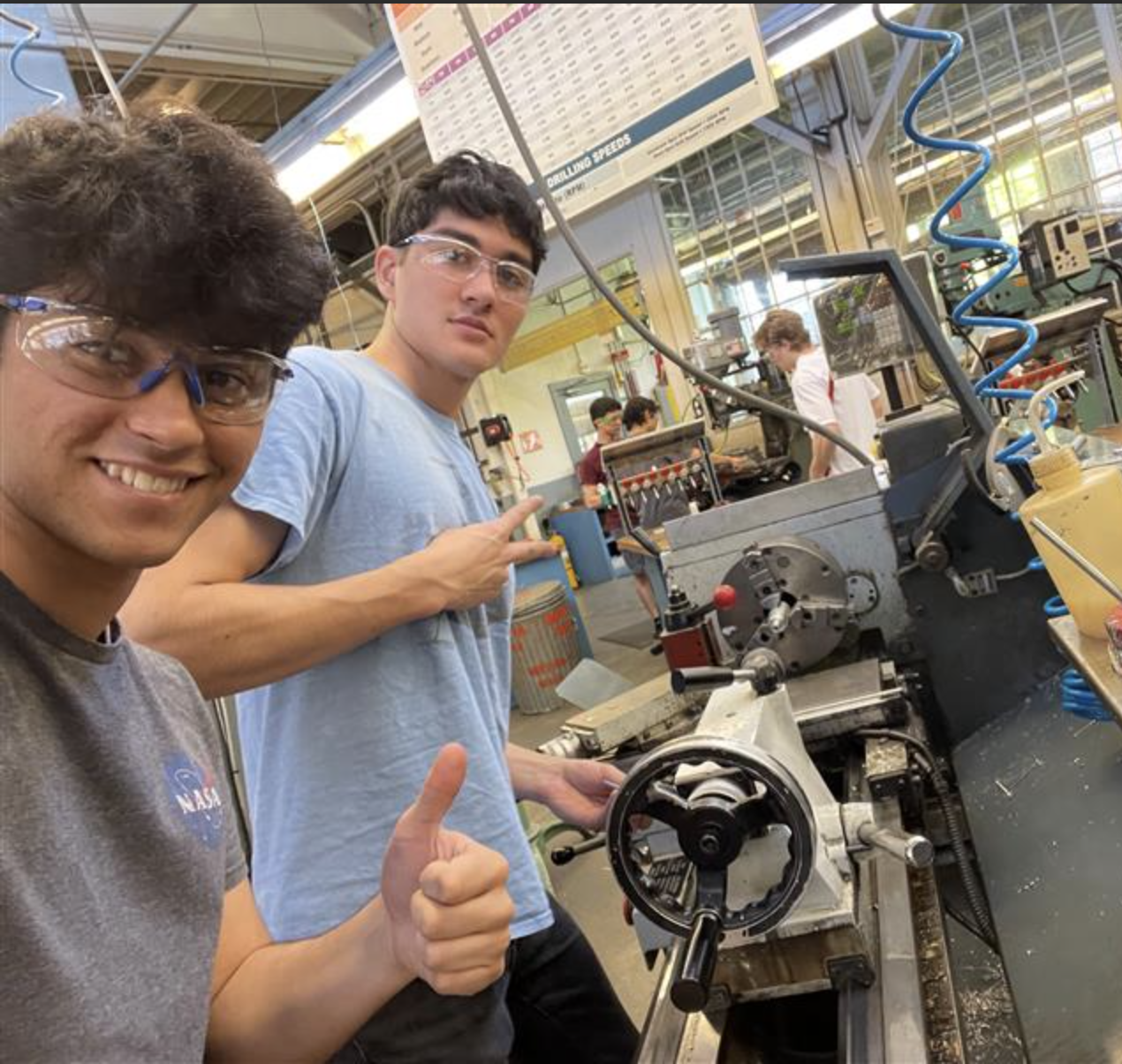
The Manufacturing team aids the other tech teams with metalworking and machining of parts while giving newer and less experienced members a solid foundation in manufacturing processes. Understanding how components are manufactured is imperative for designing parts that are both effective and practical. Throughout the year, Manufacturing team members are often tasked with helping other members produce parts or with projects that are necessary for the team to function. These include things such as testing rigs, quickjacks, and many more. The experience gained while on the Manufacturing team is something that can’t be learned in a classroom and gives our newer members the confidence to take on difficult design projects in the future.
Suspension
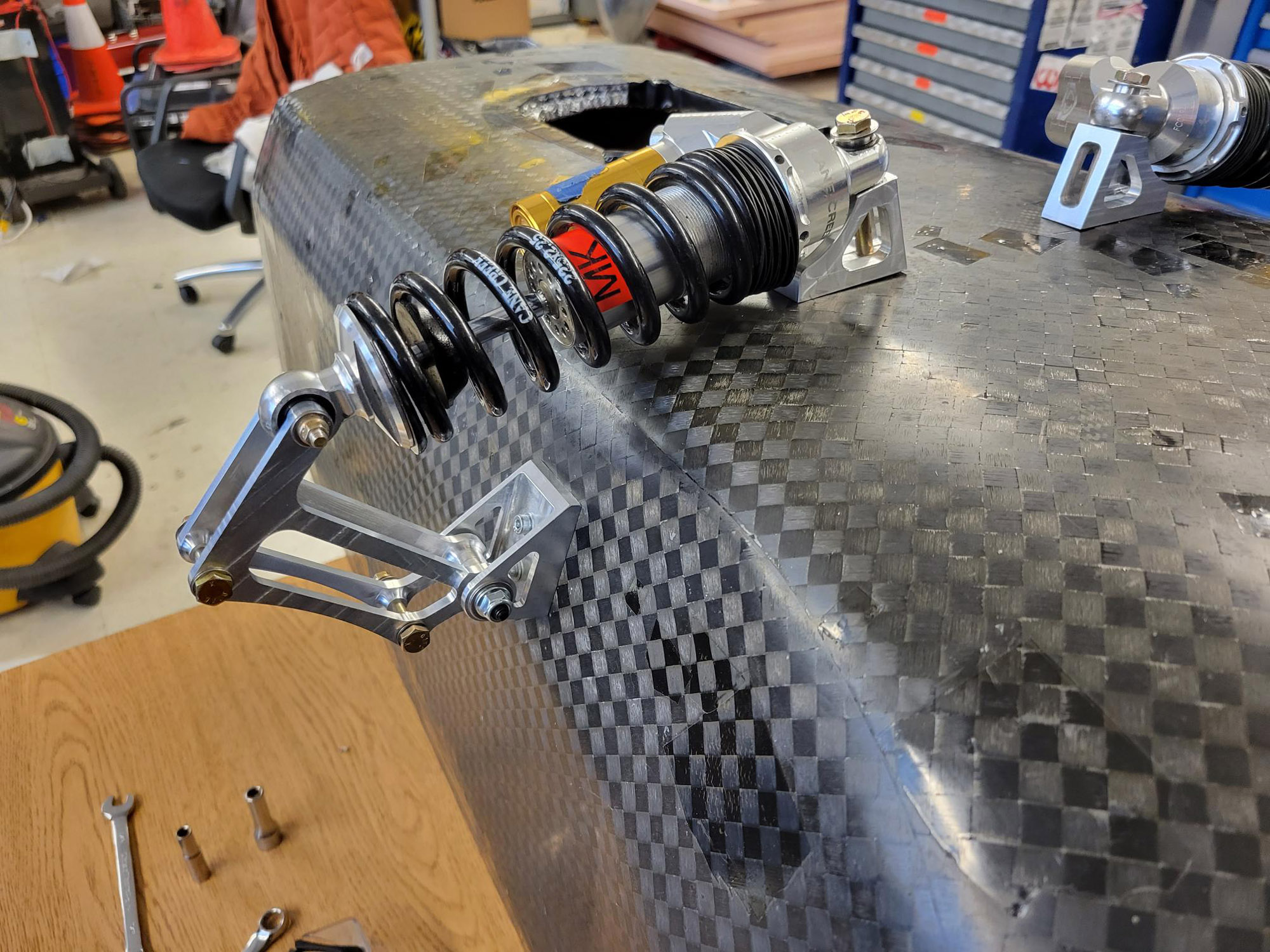
The Suspension team is responsible for increasing mechanical grip between the tires and the track in order to provide steering stability and comfort for the driver. The Suspension team works through the Fall, analyzing drive data to make informed design decisions on various projects such as the control arms, bellcranks, anti-roll bars, steering, and brakes. Through Winter quarter, various components are manufactured in-house as the team works towards the rolling chassis. Rolling chassis is the mounting assembly of all suspension components onto the completed monocoque, thus marking the first major milestone of the team each year. Following the integration of all electrical systems, aerodynamics, and driver, the Suspension team takes measurements to confirm ride height and quality. The data collected during drives is then analyzed, along with the driver feedback, to tune and refine the suspension components and produce a balanced and stable race car.
Electronics

Electronics designs the various printed circuit boards (PCBs) and integrating the low voltage systems throughout the vehicle. Projects include sensor data acquisition, driver interface systems, power distribution, and wiring to integrate all the electronic subsystems. Working with ETrain in Spring quarter, there is a large emphasis on producing a reliable vehicle that can consistently run as expected. This involves heavy debugging sessions, reviewing wiring, and other testing.
Software

The Software team spearheads the design, implementation, and integration of all programmable systems within the vehicle. This subteam’s projects center around enabling the car’s Controller Area Network (CAN Bus), a communication protocol that connects systems such as the high-voltage battery, inverters/motors, driver dash, low-voltage power distribution, and much more. The Software subteam also collects and stores all vehicle data across the CAN Bus using a state-of-the-art telemetry system, which is used to tweak parts that shave seconds on race days. By being on the software team, members get real full-stack experience, from developing low-level STM32/RP2040 modules in C/C++ and Python to client/member-facing applications in JavaScript.
Driverless

As the newest division of the UW Formula team, Driverless is pioneering the development of an autonomous system for the team’s race car. Driverless is more separate from the rest of the team, since it is operating on a different timeline and only plans to compete a few years down the road. However, we are planning the development of T35 with lots more consideration of Driverless so it will be easier to test on. The flow of events for an autonomous system is sometimes described as sense-plan-act. First, the vehicle must sense its surroundings using its various sensors (e.g. camera, LiDAR) and map its location within its environment. Then, the vehicle plans a path to traverse the environment. Lastly, the vehicle follows control commands to stay on the desired path, and applies actuation to physically steer, throttle and brake. This year, Driverless will refine its existing software logic, while members of Firmware, Electronics, and Suspension will work on some hardware/mechanical components for Driverless.
Business

Part of the FSAE competition involves a fictional scenario that questions teams about the corporate logistics of their team. The business team answers this scenario in a prepared presentation. The business team involves design, business strategy, marketing, and applications of industry knowledge. Business is not active in the Fall or Winter, as work only begins in Spring quarter. Historically, our team consistently places in the Top 5 at competition.
DTM

DTM is the race team, running and organizing operations whenever the car drives. Responsibilities include making test plans, designing course layouts, packing the trailer, reviewing telemetry, and setting up the car. DTM usually includes key personnel from tech teams such as Etrain, Electronics, Firmware, Suspension, and Aero. DTM also includes the drivers. All members of the team help run drives, but DTM specifically plans and prepares.
Public relations

Public Relations, in conjunctions with Sponsorship, is the busiest and most active admin team. Public Relations handles all the outward facing media that the team produces. This including social media, website, newsletter, and events. Members on Public Relations vary from photographers, editors, writers, event planners, and graphic designers. The car's livery is also designed by PR members with input from the broader team. PR works actively throughout the year to put on social media post and prepare for our major events such as Silent Auction and Unveiling. PR also manages internal events for the team.
Resource management

Resource Management oversees the team resources, facility use, and safety procedures to ensure maximum workflow efficiency. This team’s goal is to maintain and improve the organizational system for tools and equipment make sure that the workspaces are functional and tidy.
Sponsorship

Sponsorship sources the team’s manufacturing needs by procuring donations of money, materials, or services in exchange for PR obligations. Members are responsible for contacting and maintaining relations with both local, national, and international companies who provide integral components in the construction of the car. Parts like our 3D metal printed uprights, battery cells, and foam machinging are sponsored. Through research, emails and many phone calls, members can expect to receive valuable experience with industry professionals and potential sponsors.






